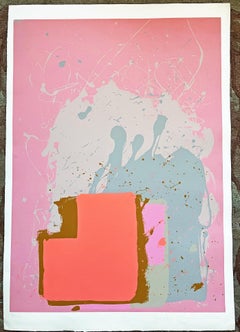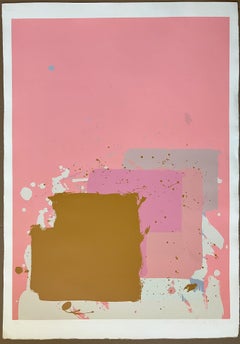Paul Caulfield
1970s Abstract Expressionist Abstract Prints
Paper, Screen
1970s Abstract Expressionist Abstract Prints
Paper, Screen
People Also Browsed
Late 20th Century Abstract Expressionist Abstract Prints
Lithograph
2010s American Modern Contemporary Art
Paper
2010s American Modern Stools
Wood, Oak
1980s Pop Art Still-life Prints
Offset
Antique 19th Century British Garden Ornaments
Iron
Antique 19th Century European Wall Mirrors
Metal
2010s Abstract Abstract Paintings
Cotton Canvas, Ink, Acrylic, Pigment
Antique Mid-19th Century Chinese Qing Ceramics
Porcelain
Mid-20th Century Italian Hollywood Regency Wall Mirrors
Chrome
2010s American Impressionist Landscape Paintings
Linen, Oil, Panel
2010s Naturalistic Landscape Paintings
Paper, India Ink, Acrylic
Vintage 1930s Italian Art Deco Wall Mirrors
Parchment Paper
1970s Abstract More Art
Metal, Enamel
2010s Asian Chinoiserie Dressers
Bamboo
2010s Modern Abstract Paintings
Acrylic, Watercolor, India Ink, Paper
Vintage 1950s Italian Mid-Century Modern Glass
Art Glass
John Hoyland for sale on 1stDibs
John Hoyland RA was a London-based British artist. He was one of the country’s leading abstract painters.
Find John Hoyland paintings and other art on 1stDibs.
(Biography provided by Phi Auctions)
Finding the Right Abstract-prints-works-on-paper for You
Explore a vast range of abstract prints on 1stDibs to find a piece to enhance your existing collection or transform a space.
Unlike figurative paintings and other figurative art, which focuses on realism and representational perspectives, abstract art concentrates on visual interpretation. An artist may use a single color or simple geometric forms to create a world of depth. Printmaking has a rich history of abstraction. Through materials like stone, metal, wood and wax, an image can be transferred from one surface to another.
During the 19th century, iconic artists, including Edvard Munch, Paul Cézanne, Georgiana Houghton and others, began exploring works based on shapes and colors. This was a departure from the academic conventions of European painting and would influence the rise of 20th-century abstraction and its pioneers, like Pablo Picasso and Piet Mondrian.
Some leaders of European abstraction, including Franz Kline, were influenced by the gestural shapes of East Asian calligraphy. Calligraphy interprets poetry, songs, symbols or other means of storytelling into art, from works on paper in Japan to elements of Islamic architecture.
Bold, daring and expressive, abstract art is constantly evolving and dazzling viewers. And entire genres have blossomed from it, such as Color Field painting and Minimalism.
The collection of abstract art prints on 1stDibs includes etchings, lithographs, screen-prints and other works, and you can find prints by artists such as Joan Miró, Alexander Calder and more.

